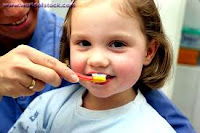The Misunderstood Aspergers Child
This video reveals the true reasons behind the behavior that some teachers may view as insubordination. Is your Aspergers or HFA student "misbehaving" - or is he simply experiencing some "autism-related" symptoms? Either way - you can help! Note to parents: Please email your child's teacher(s) and send them the link to the video below. Copy and paste the following URL into your email: http://www.myaspergerschild.com/2012/04/misunderstood-aspergers-child.html ==> Teaching Students with Aspergers and High-Functioning Autism
